Hey, let’s talk about companion planting strategies that can naturally boost your garden’s growth. You’ve probably got some veggies or flowers you’re tending, right? Pairing certain plants, like marigolds with tomatoes, can ward off pests and improve yields—plant them just 12 inches apart for best results. There’s a whole lineup of clever combos to explore, so stick around to uncover more garden hacks.
Contents
Marigold Planting Strategy
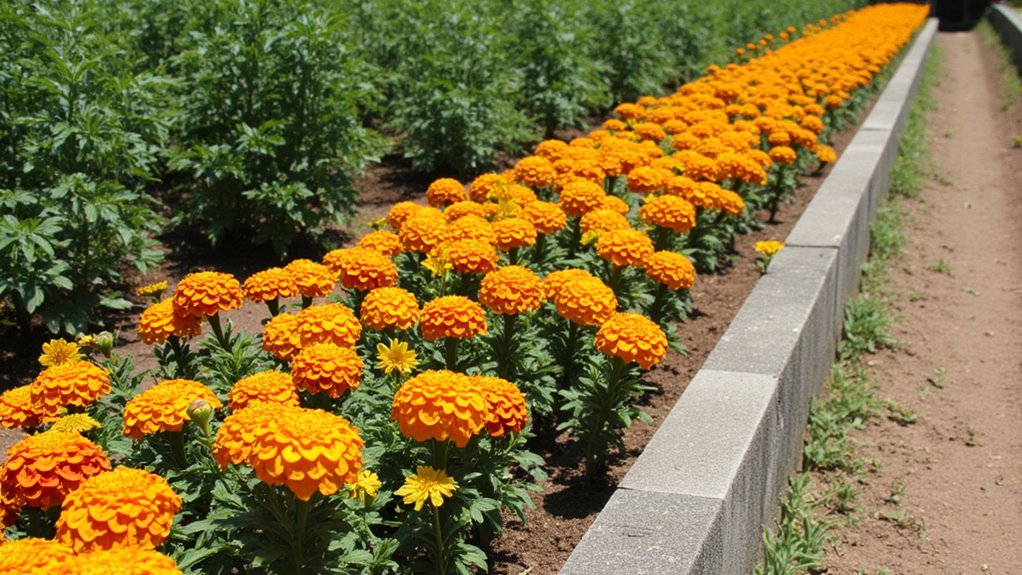
While you might think planting marigolds is just about adding color, it’s a smart strategy for protecting your garden. These vibrant flowers aren’t just pretty; they repel pests like nematodes and aphids naturally.
Here’s how you do it. Plant marigolds around your vegetable beds, spacing them about 8-12 inches apart, near crops like tomatoes or peppers. Their strong scent confuses harmful insects, keeping them at bay without chemicals.
Ready to start? Sow marigold seeds directly in the soil after the last frost, in full sun, about 1/4 inch deep. Water them lightly, and expect sprouts in 7-14 days. Thin seedlings to avoid crowding, ensuring strong growth. With this trick up your sleeve, you’ll guard your garden like a pro!
Basil Companion Strategy
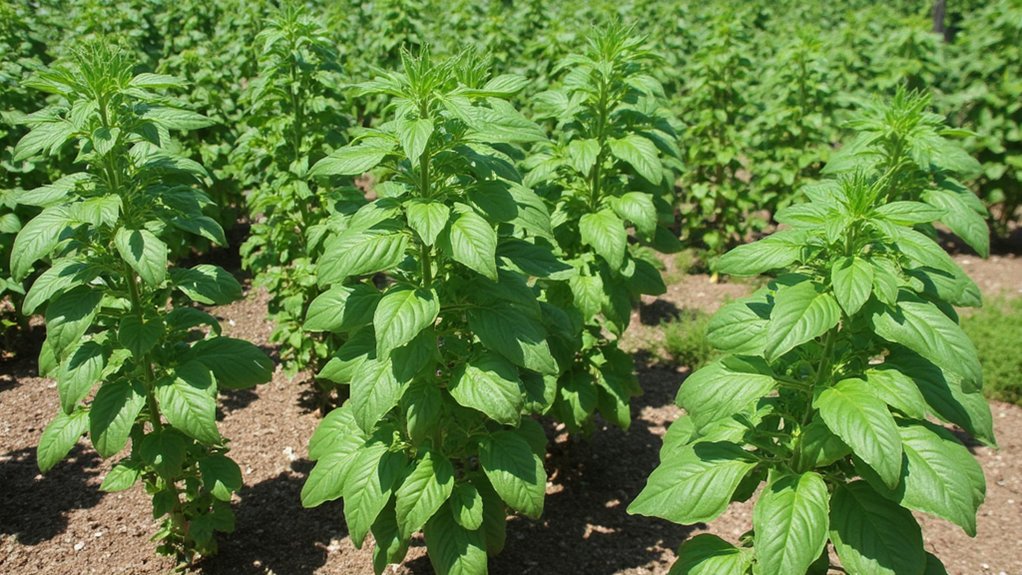
As you immerse yourself in companion planting, let’s talk about using basil to boost your garden’s health. This aromatic herb isn’t just for cooking; it’s a powerhouse ally. Plant it near tomatoes to repel pests like aphids and hornworms, naturally.
Space basil about 12 inches apart from tomato plants, ensuring good airflow. You’ll want to sow seeds or transplant seedlings after the last frost, around late spring. Pinch off flower buds regularly to keep the plant bushy and productive.
Also, try pairing basil with peppers or eggplants for similar pest-repelling benefits. Check weekly for signs of bugs, and snip leaves as needed for your meals. With basil, you’re not just growing a herb; you’re building a stronger, healthier garden plot.
Nasturtium Companion Strategy
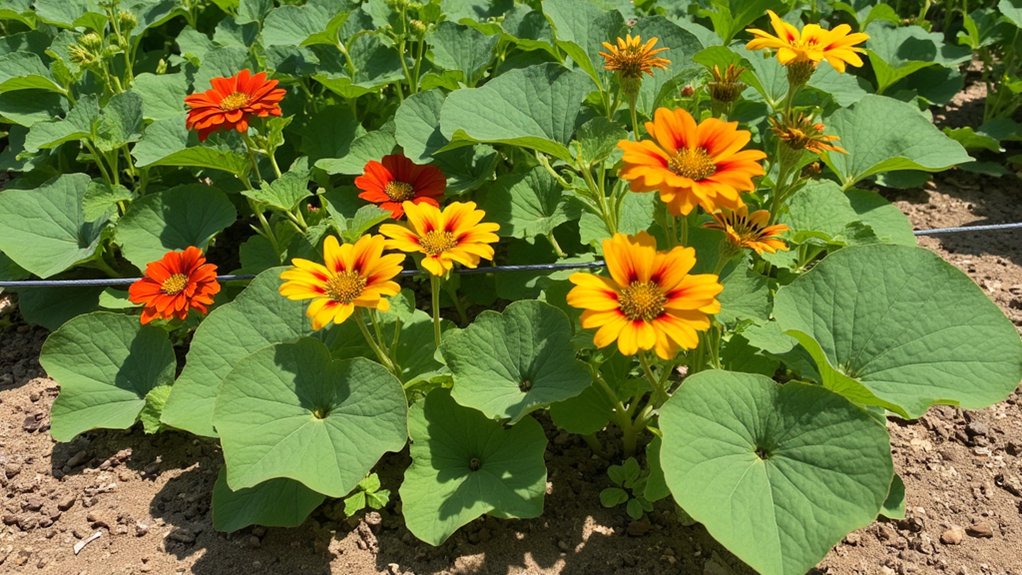
Now that we’ve covered basil, let’s explore the nasturtium companion strategy for your garden. These vibrant flowers aren’t just pretty; they’re practical, too. Plant nasturtiums near your beans, cucumbers, or squash to naturally repel pests like aphids and beetles.
Here’s how you do it: sow nasturtium seeds about 10 inches apart, near the base of your main crops, ideally in early spring. They’ll grow fast, often blooming within 6-8 weeks, creating a protective barrier. Make sure they get full sun, at least 6 hours daily, and well-drained soil to thrive.
Beyond pest control, they attract pollinators like bees, boosting your garden’s yield. So, toss in some nasturtium seeds, and watch your plants flourish with minimal effort!
Carrot Companion Strategy
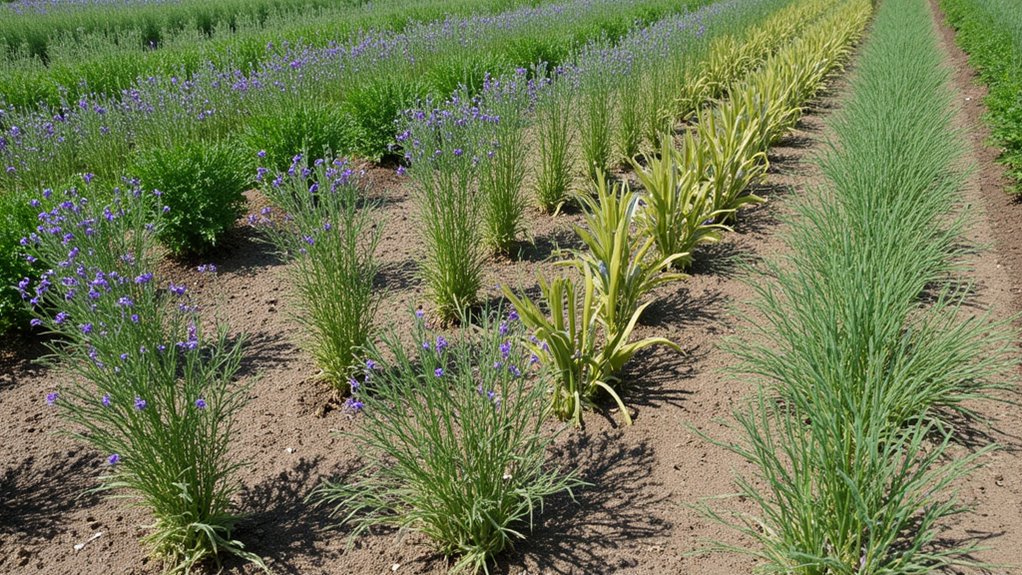
Let’s explore the carrot companion strategy to boost your garden’s health. You’ve likely noticed carrots can be tricky with pests. Plant them near onions, and you’ll deter carrot flies naturally. Space them about 12 inches apart for best results.
Now, try pairing carrots with leeks, too. These companions confuse pests with their strong scents, protecting your crop. Sow leek seeds alongside carrot rows, roughly 6 inches apart, in early spring. This combo maximizes space and minimizes bug issues.
Lastly, don’t forget about chives. They’re great for repelling insects and boosting carrot flavor. Plant chives in clusters, about 8 inches from carrot rows, and trim them every 4 weeks to keep growth vigorous. Watch your carrots thrive with these simple, effective pairings!
Garlic Companion Strategy
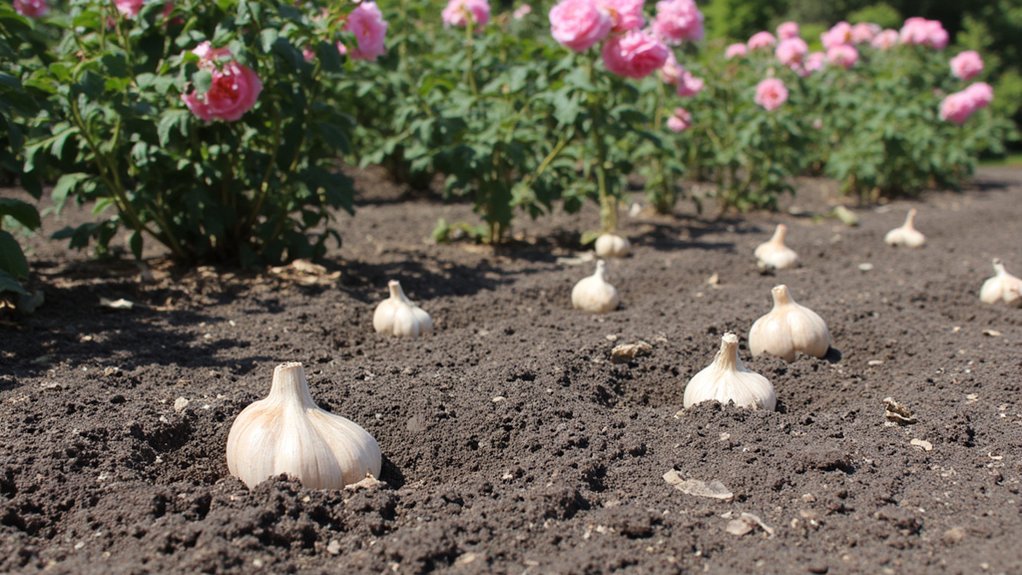
Plunge into the garlic companion strategy to supercharge your garden’s defenses. You’ve gotta try planting garlic near roses or fruit trees. It’s a natural pest repellent, keeping aphids and beetles at bay with its strong scent.
Here’s how you do it: plant garlic cloves 4-6 inches apart, about 2 inches deep, in well-drained soil. Do this in early fall, around October, for a robust spring harvest. Make sure it’s near plants that need protection, but give each clove space to grow.
Why does this work so well? Garlic releases sulfur compounds that bugs hate, acting like an invisible shield. So, tuck some cloves in your beds this season, and watch pests scatter without harsh chemicals messing up your garden.
Onion Companion Strategy
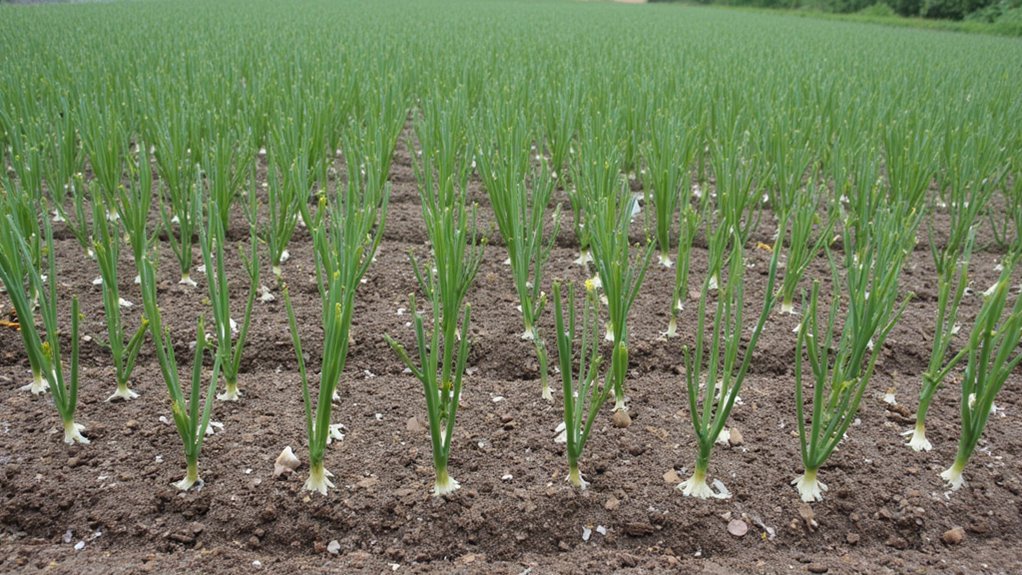
Try out the onion companion strategy to boost your garden’s natural defenses. Plant onions near carrots, beets, or lettuce, as they repel pests like carrot flies and aphids with their strong scent. It’s a simple trick, but it works wonders.
Space your onions about 4-6 inches apart from these crops, ensuring they’ve got room to grow. Do this in early spring, around March or April, when the soil’s workable. Their pungent aroma acts as a barrier, so keep them on the outer edges of your veggie beds for max effect.
Check weekly for any pest activity, and pull weeds to avoid competition. You’ll notice healthier plants within a month, trust me. Stick with this, and your garden’s gonna thrive naturally.
Chive Companion Strategy
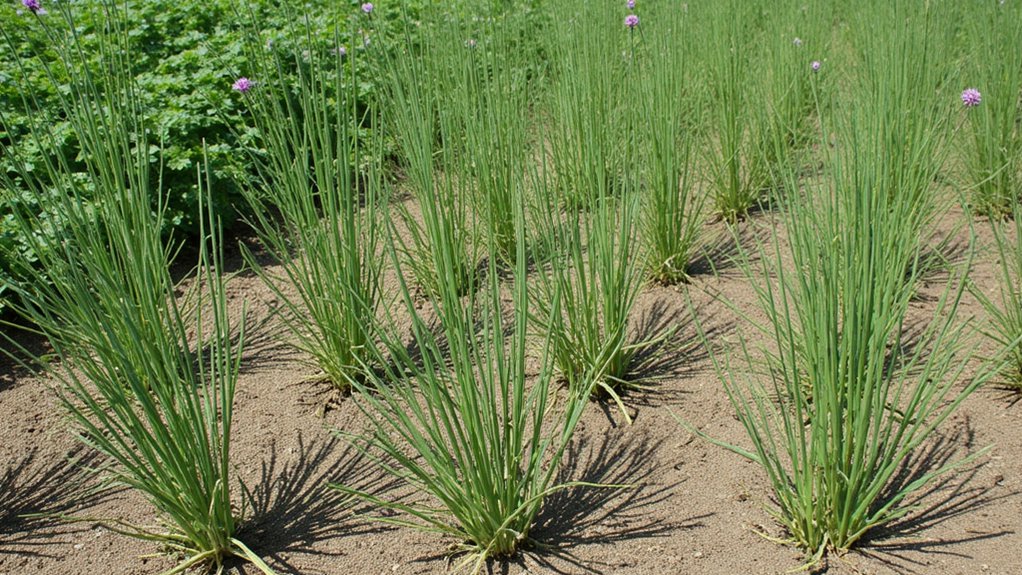
While onions pack a punch in the garden, chives offer a subtler yet effective companion planting strategy. You’ll find these slender, green herbs aren’t just tasty; they’re practical, too. Plant them near carrots, and they’ll repel carrot flies with their mild onion-like scent.
Space chives about 8-12 inches apart, ideally in early spring, for best results. They thrive in well-drained soil, so mix in some compost before planting. Water them regularly, aiming for 1 inch per week, to keep growth steady.
You can also pair chives with tomatoes to deter aphids naturally. Tuck them around the base, roughly 6 inches from the tomato stems, and watch for healthier plants. Harvest chives after 60 days, cutting close to the base, to encourage regrowth.
Mint Companion Strategy
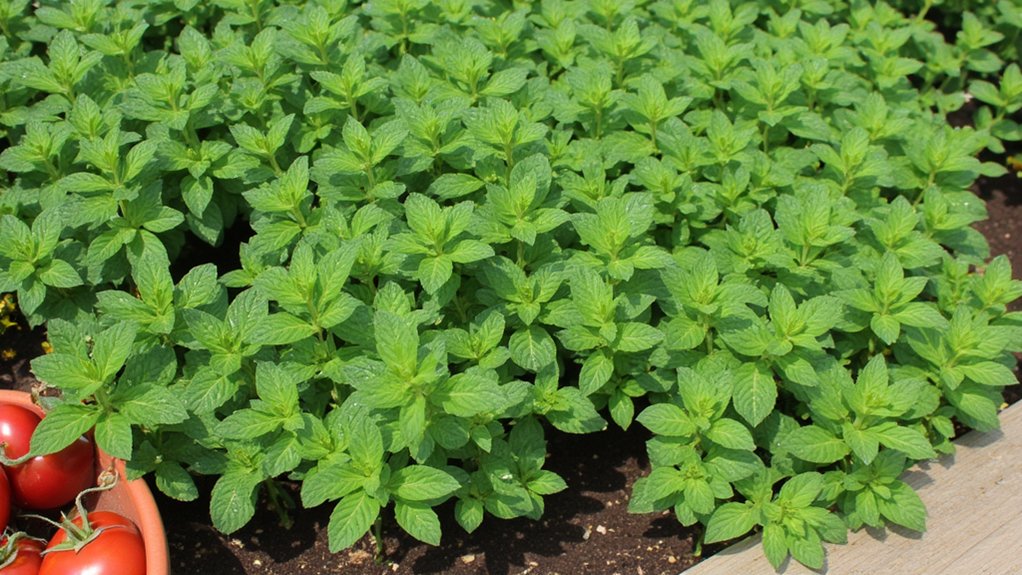
As you explore companion planting, let’s plunge into the power of mint in your garden. This vigorous herb isn’t just for tea; it’s a fantastic ally. Mint repels pests like ants and aphids with its strong scent, so plant it near vulnerable crops.
Place mint around cabbage or tomatoes, spacing plants about 18 inches apart for air flow. It grows fast, often within 2-3 weeks of planting, but watch out—it spreads! Contain it in pots or use barriers, like buried edging 8 inches deep, to prevent takeover.
Check weekly for overgrowth, trimming as needed with sharp shears. Pair it wisely, ensuring it doesn’t shade smaller plants. With this strategy, you’ll boost your garden’s health naturally and keep pests at bay.
Borage Companion Strategy
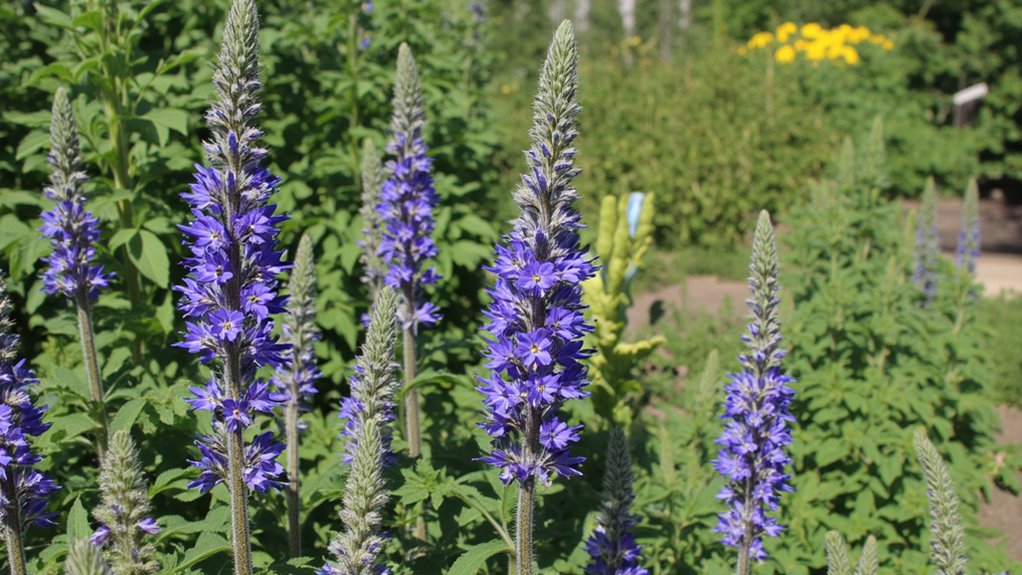
Let’s plunge into the borage companion strategy, a game-changer for your garden’s balance. You’ve gotta try planting borage near tomatoes, strawberries, or squash. This fuzzy-leaved herb, with its star-shaped blue flowers, attracts pollinators like bees, boosting fruit set.
Here’s the plan: sow borage seeds about 12 inches apart, near your main crops, in early spring. Make sure they get full sun and well-drained soil, as they hate soggy roots. Water them regularly, aiming for 1 inch per week, and watch them grow up to 3 feet tall. They’ll also deter some pests with their prickly texture.
Stick with this setup, and you’ll see healthier plants. Borage decomposes fast, too, adding nutrients back to your soil naturally. Keep it simple, and reap the benefits!
Dill Companion Strategy
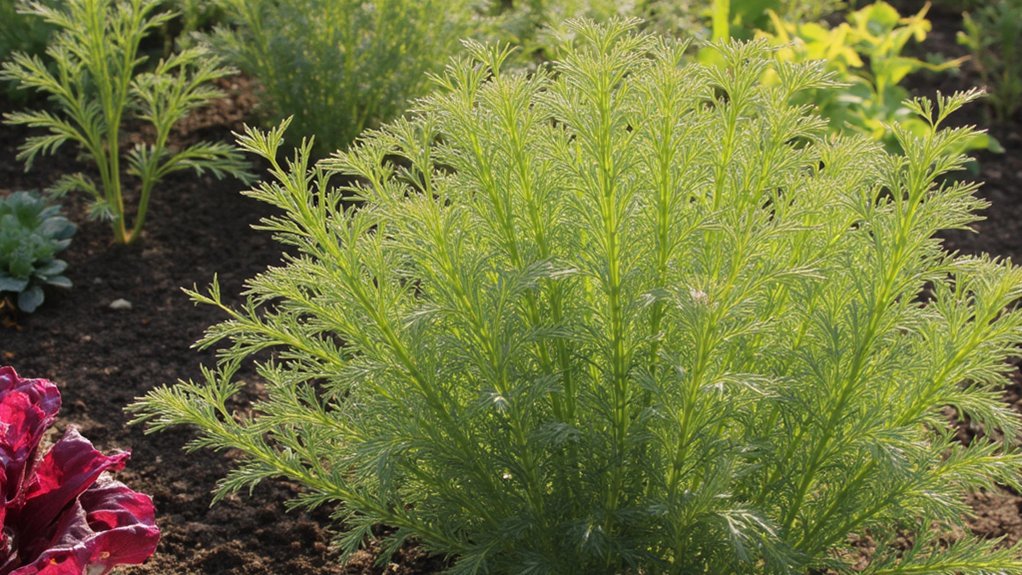
Dive right into the dill companion strategy, a smart move for boosting your garden’s vibe. You’ve gotta try planting dill near your cabbage, lettuce, or onions. It’s a neat trick since dill attracts beneficial insects, like lacewings, that munch on pesky aphids.
Here’s how you do it: plant dill seeds about 18 inches apart, near those crops, in early spring. Make sure the soil’s well-drained, and give ‘em full sun, at least 6 hours daily. Water lightly, keeping soil moist but not soggy, especially in the first 2 weeks.
Watch for growth in 10-14 days, and don’t overcrowd—thin seedlings if needed. Pairing dill this way maximizes space and naturally cuts pest issues. You’re basically setting up a mini ecosystem, pretty cool, right?
